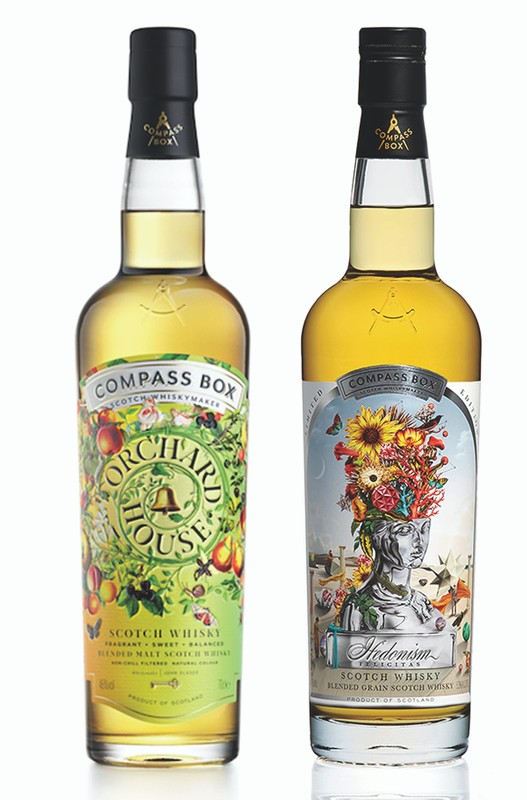
Port pileups, shipping delays, and supply chain disruptions are hampering industries across all sectors of the economy—and that includes beverage alcohol. For wine and spirits in particular, glass supply and shipping snags are two of the biggest problems. Sales remain strong, but businesses of all sizes—including producers, importers, and retailers, are scrambling to stock the most sought-after releases heading into the holidays.
“Supply constraints are always popping up, but never to the extent and scope that we’re seeing now,” says Nima Ansari, spirits buyer at Astor Wines & Spirits in Manhattan. Preparing for the holiday crunch requires checking in daily on ETAs [and] quantities, plus anticipating needs. “We’re working with the assumption that further delays will continue at least for the foreseeable future, we’re prioritizing key SKUs and considering alternatives,” she adds. At Julio’s Liquors in Westborough, Massachusetts, owner Ryan Maloney’s strategic thinking has gone into overdrive. “We’re buying brands in different quantities than we might normally carry, just to keep them in stock as long as we can,” he says. “It’s a fine line—you want to prepare, but you also don’t want to compound the problem.”
On the Scotch whisky front, port backlogs are forcing some producers to adapt in shipping to the U.S. and their other major export markets. “We’ve expanded our network of ports to try and mitigate recent issues with port congestion and the challenges raised from limited availability of vessels,” says Elif Yontucu, head of operations at Scotch maker Compass Box Whisky. While the voyage from Scotland to New York used to take approximately ten days port-to-port, it now takes around a month because of extended lead times, Yontucu notes. “Due to those new conditions, we’re constantly re-evaluating our processes,” she adds. “We’re in contact with our partners on both sides of the Atlantic to ensure we’re working as efficiently as possible.”
Scotland’s largest port, Grangemouth, has ramped up activity to keep feeder vessels carrying Scotch and other exports on schedule as they depart for deep-sea shipping ports in England, the Netherlands, and Belgium. Still, backlogged deep-sea ports like Felixstowe (Britain’s largest container port) are further complicating passage to the U.S. Once shipments arrive stateside, they face subsequent delays at U.S. ports, especially on the West Coast. The backup continues farther down the supply chain—exacerbated by a nationwide truck driver shortage.

The supply chain hurdles didn’t catch everyone off-guard. “We began to face this last March,” says Sandra LeDrew, COO of Terlato Wines International. “Demand really started to shoot up in April and May, so we began to order out farther with our suppliers, and we took on more inventory than we normally carry.” Terlato also worked with its distributors to prioritize specific markets—calibrating those priorities according to supply levels, and in some cases transferring inventory by airfreight.
Sam Filmus, president of California-based importer Impex Beverages, says glass and other dry goods shortages have delayed special releases from several of the company’s suppliers, as well as the second edition of its own independent bottler brand, the ImpEx Collection. Filmus has turned to airfreight to ensure certain products are available during the holidays, in some cases splitting the costs with suppliers. But even airfreighting has become more difficult—and more costly. It took a month to book the flight for the company’s last airfreight shipment—whereas it used to take a day, he says. Meanwhile, costs more than doubled to $50 a case of six bottles. “We’re absorbing these added costs because we feel it is right to not pass them onto the consumer,” Filmus adds.
American whiskey makers too are grappling with supply constraints, trucking shortages, and other logistical issues testing their ability to keep up with rising demand. “We’ve taken extensive measures to reinforce material supply, increase production capacity, and prioritize production of our top-selling products,” says Brown-Forman Corp. director of investor relations Sue Perram.
Producers, importers, and retailers all say the bottlenecks, backlogs, and other supply chain disruptions could last well into 2022. “Will some brands be out of stock in stores? Yes,” LeDrew says. “I think the tougher categories right now are New Zealand and Australia, because they’re coming through the Los Angeles and Long Beach ports, so it’s taking longer.” In the meantime, a little flexibility on the part of drinkers goes a long way. “As long as you’re not fixated on one specific thing, you’ll have plenty of quality options to choose from despite the circumstances,” Ansari says.